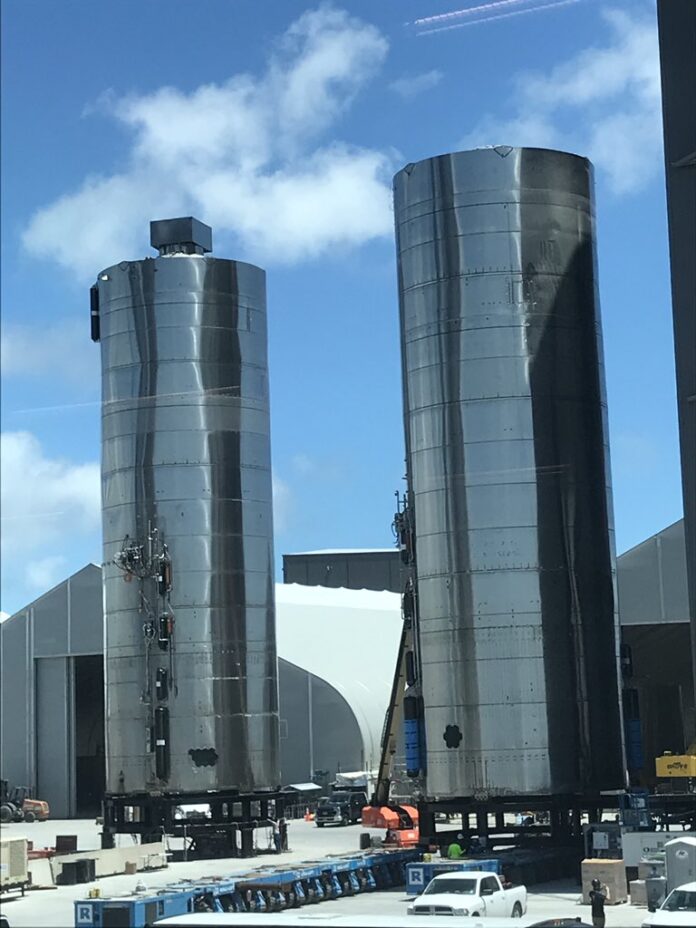Observers of the 500-foot hop of SpaceX’s Starship SN5 prototype on Aug. 4 at the company’s Boca Chica build/test site may have noticed a slight lean to the machine once the vehicle had settled on the pad and the dust had cleared.
The reason for the tilt was that some of the craft’s six stubby landing legs fared better than the others on touchdown. All the same, the single-engine SN5 survived the flight essentially unscathed and could be used for a second hop, according to SpaceX founder and CEO Elon Musk.
“Not sure yet, but hopefully,” he tweeted on Aug. 8. “Will need leg & other repairs. Probably SN6 flies before SN5. We need to make flights simple & easy — many per day.”
SN5 was moved back to the Starship Production Complex, about 1.5 miles west of the launch pad, on Tuesday and was shown alongside the completed SN6 in a photo Musk posted to Twitter. The Boca Chica crew, wasting no time, rolled SN6 to the launch pad the same day. Musk also tweeted that “SN7 will be new alloy test tank taken to burst pressure. SN8 will have body flaps & nosecone.”
On June 23 the Boca Chica team intentionally pressurized SN7’s fuel tank to the point of failure in order to test a new type of stainless steel alloy. Body flaps and a nosecone on SN8 means that prototype will look less like a grain silo — ala SN5 — and more like a spaceship.
In response to a Twitter user asking what comes next after the inaugural SN5 hop, Musk tweeted on Aug. 4: “We’ll do several short hops to smooth out launch process, then go high altitude with body flaps.”
If Musk’s past statements are any indication, “high altitude” means 20 kilometers (12.5 miles), which is still suborbital, with orbital test flights to come later. Meanwhile, SN6 is on the launch stand an undergoing preparations to fly. Expect engine installation, fuel pressurization testing, engine static-fire test and another 500-foot hop at some point in the near future.
To recycle an August 2018 tweet from Musk: “Progress is accelerating.”




